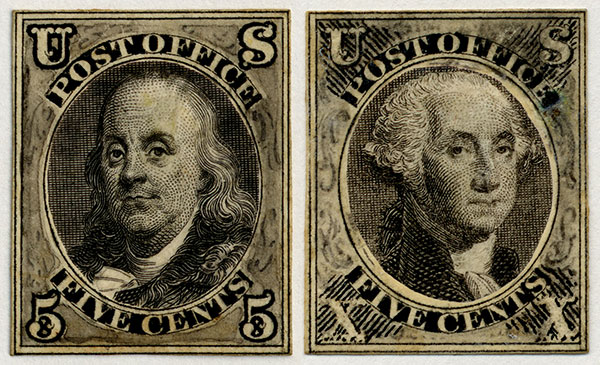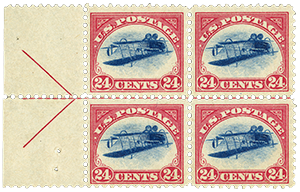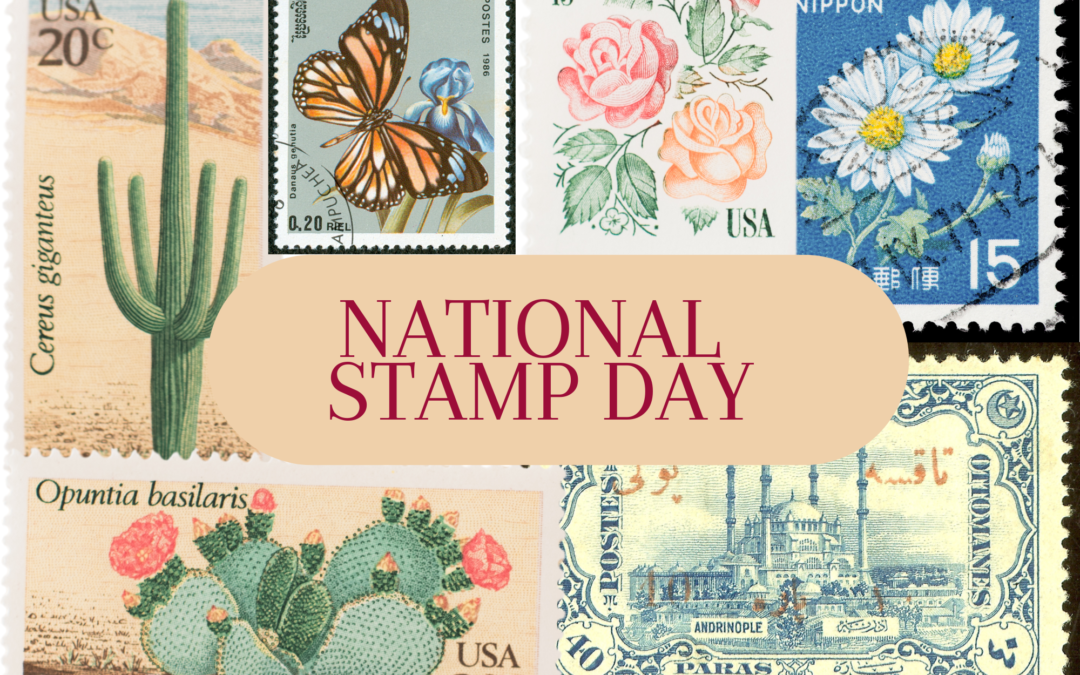Every year on July 1st is National Stamp Day! We’ll look at a brief history of the Post Office and the many interesting stamps. Did you know that stamp collectors are called philatelists?
The modern post office was created during the colonial period by Benjamin Franklin. Franklin oversaw the colonial mail service in defiance of the British. Using the original routes set by the British, Franklin expanded the routes to connect all thirteen colonies. With the expansion of the roads, mail from Philadelphia to New York could be delivered in 33 hours. In the early 1770s, Franklin and fellow patriots organized the first mail networks under the Committees of Correspondence which became the Post Office of the United States. Ninety years later, mail service to the new American west took roughly twenty-five days to get from Missouri to California. To fix the problem businessmen William H. Russell, William B. Waddell and Alexander Majors created the Central Overland California & Pikes Peak Express Company to shorten the length of travel using lone horsemen. The Pony Express used these riders to bring mail in 10 days. However, the Pony Express was not profitable and went bankrupt just eighteen months later. The Post Office is also credited with aiding the expansion of our aviation industry with Charles Lindbergh flying mail in the early 1920s.
On July 1st, 1847 the two first stamps were introduced. The stamps included a picture of George Washington and Benjamin Franklin. Before 1847, mail would travel as postage due with the receiver paying for the postage. As stamps were created, the former system method was flipped. This was met with some backlash as people said that “prepaid letters would negatively reflect on the wealth of the other person”. To send one letter would cost twenty-five cents and most of the wages for one days’ work. In 1847 it was thought to be around a dollar. In the new system, a half ounce letter would cost five-cents for mail under 300 miles. A ten-cent stamp for traveling more than 300 miles. Franklin was on the five cent stamp to reflect his status as the first Postmaster General and Washington was on the ten-cent to reflect his first presidency.

Here are other important stamps to check out!
The Inverted Jenny, 1918
This collector’s item was originally an accident, when a hundred copies of Curtiss JN-4 aka “The Jenny ” were printed which led to some embarrassment. The stamp was released in the late 1910s for the ending of World War I and instantly became a hot item for collectors. Today the stamp is worth around 100,000 dollars. In 2023, one stamp was sold at 2.6 million dollars. If you are looking to see the stamp in a museum you are out of luck. At the Postal Museum in Washington DC, this stamp is currently not on display due to the dye used in the stamp. The Jenny stamp has red dye that is not suitable for ultraviolet light which would alter the red to an orange coloring. After the first World War, some of the Jenny planes were used to transport mail and pilots did not have any navigation tools to help them.

Hawaiian Missionaries
Named after the missionary groups in the Kingdom of Hawai’i these were the first official stamps to go trans-pacific. Mail service was limited to Hawai’i until the Gold Rush and the settlements of California. When the city of San Francisco was being constructed, the Hawaiian government wanted to create their own postal system to help with the new influx of correspondence. Henry Martyn Whitney was the first postmaster of the Kingdom. The stamps Whitney and his employees used were two and three cent. The two cent was strictly used for the newspaper, The Polynesian and the three cent was for general mail. In the stamp below they created another price for postage to the United States east coast which was for thirteen cents. All of the Hawaiian stamps were printed in the blue ink as seen below. Whitney used pelure paper which is similar to tissue paper and is easily breakable. These stamps are still considered to be rare due to the paper. In the movie, Charade Cary Grant’s character hides some Hawaiian stamps.

Moon Mail, 1971
In honor of the Apollo 15 launch and exploration with the rover, a stamp was made to commemorate this historic event. On August 2, 1971, astronaut Dave Scott wrote while in his space suit, addressed and used this stamp while placing an American flag on the lunar surface.



Recent Comments